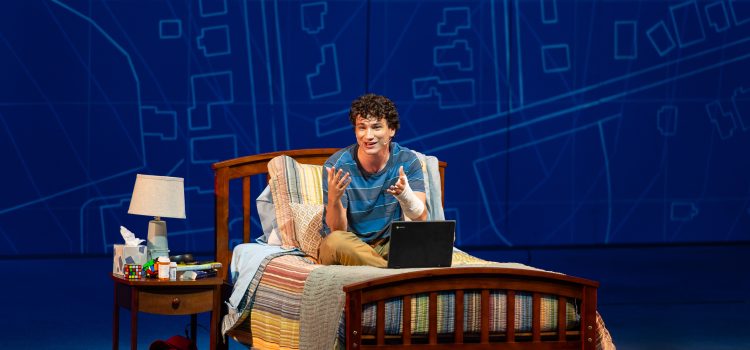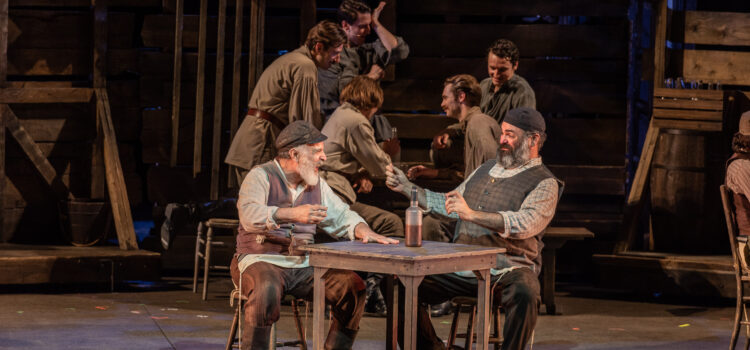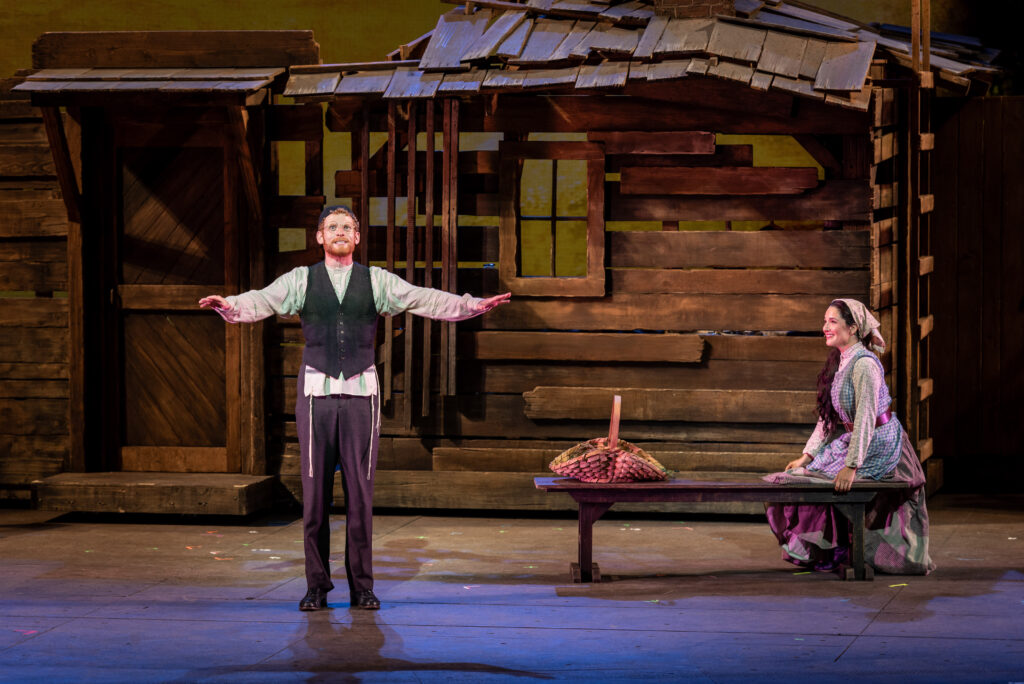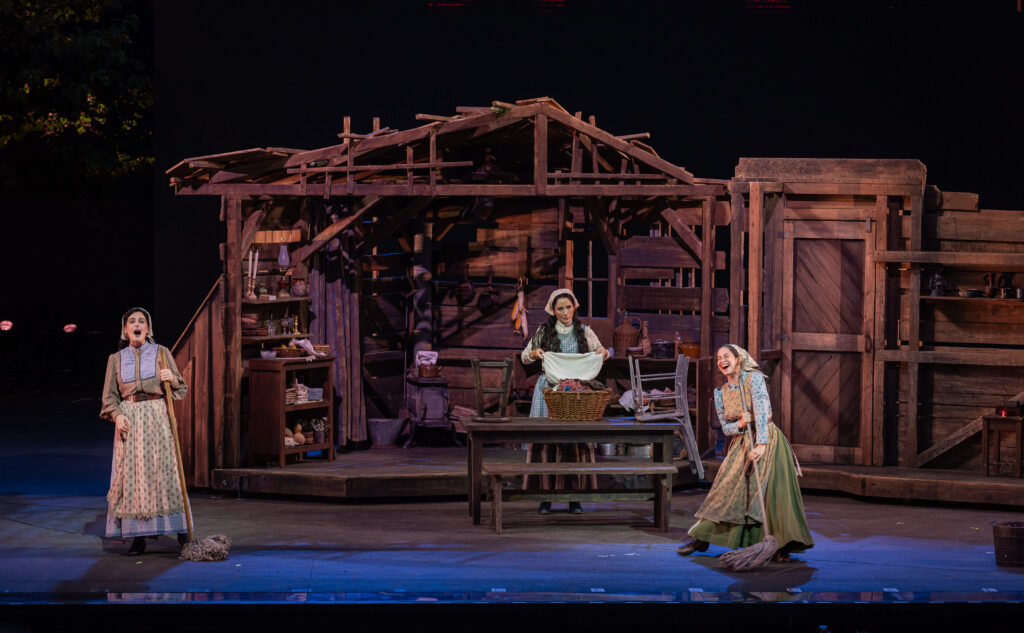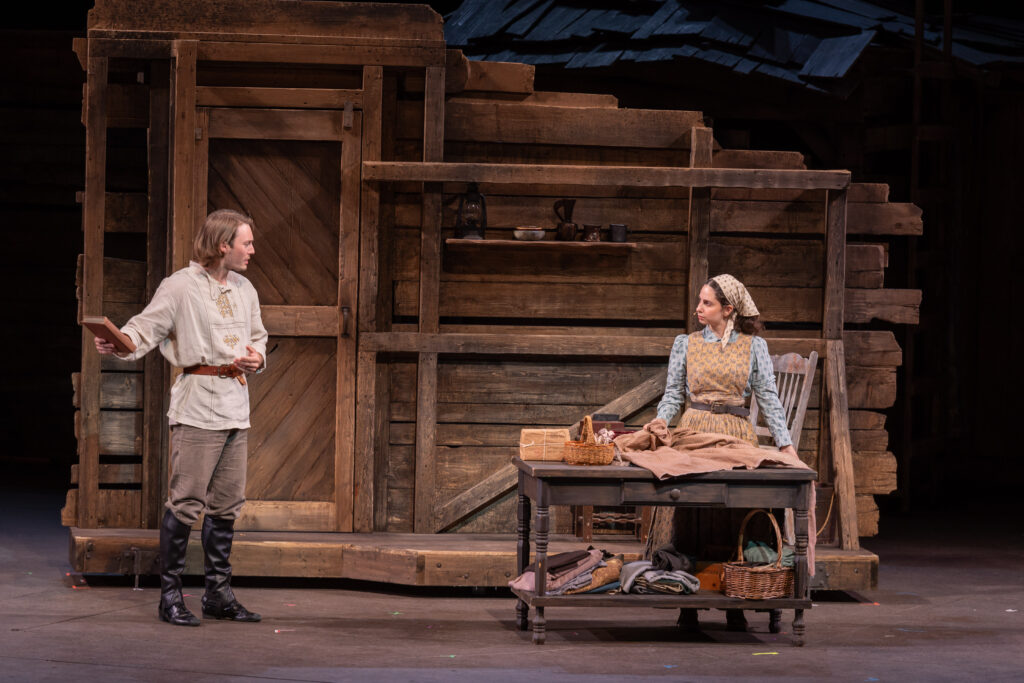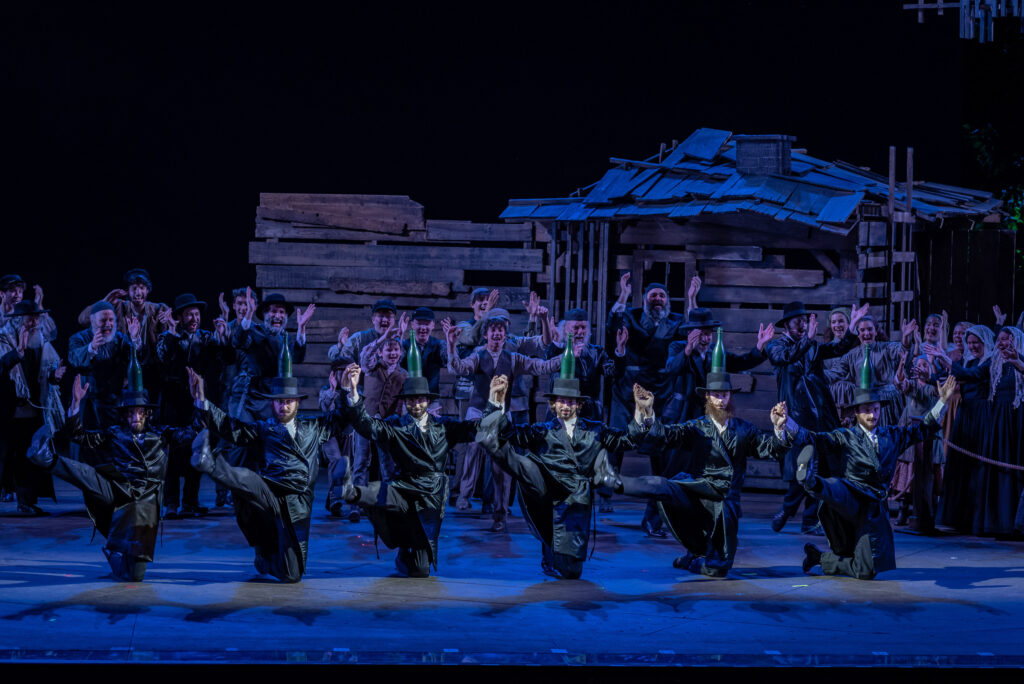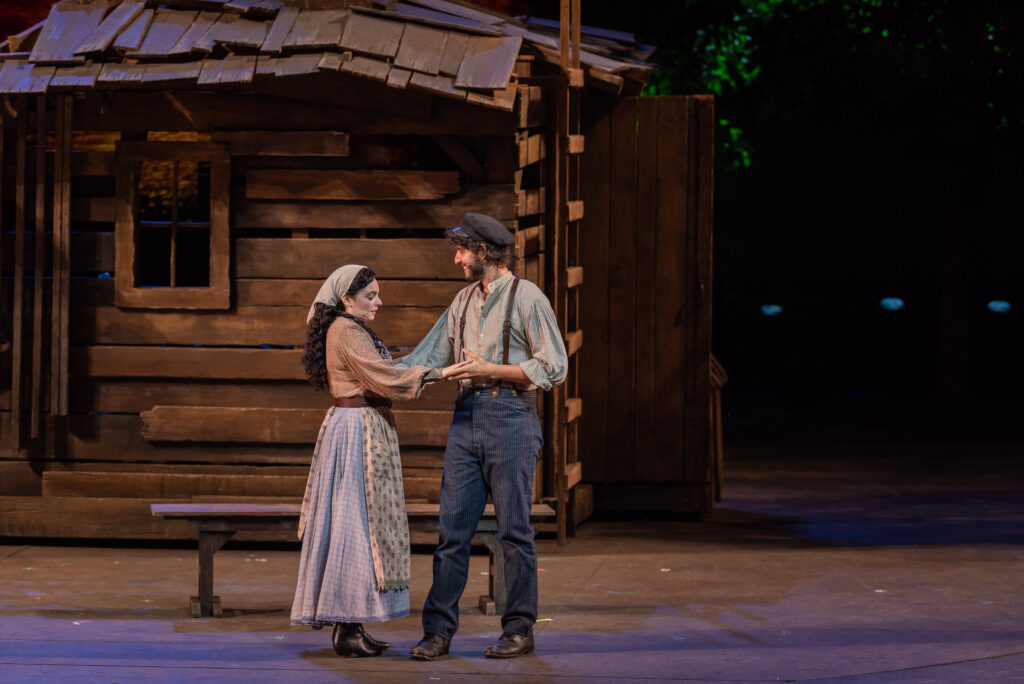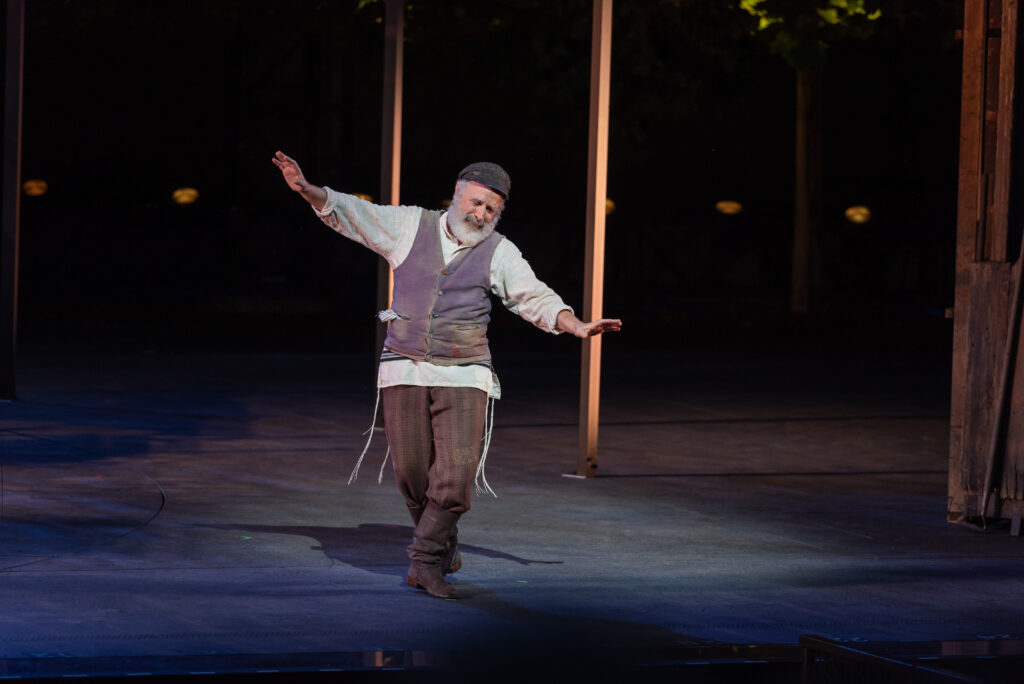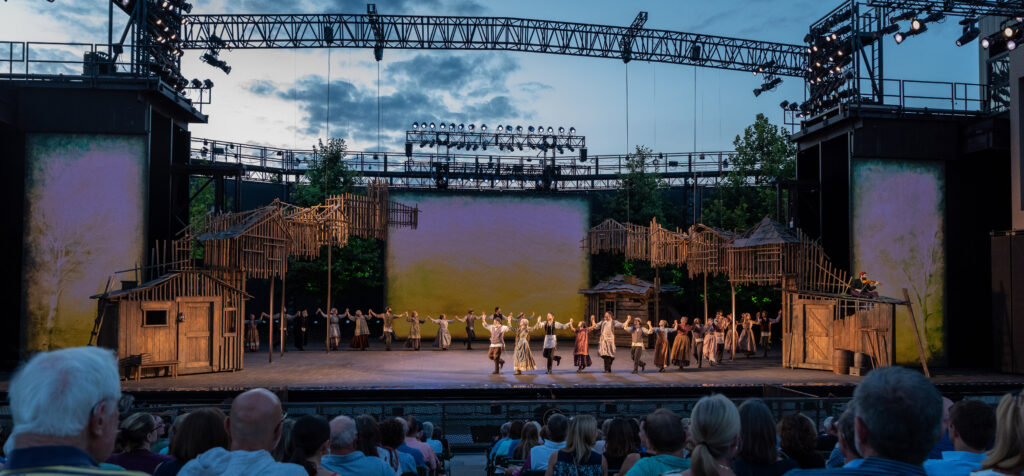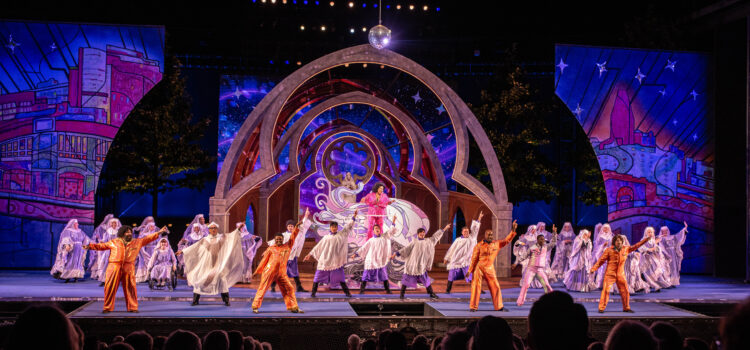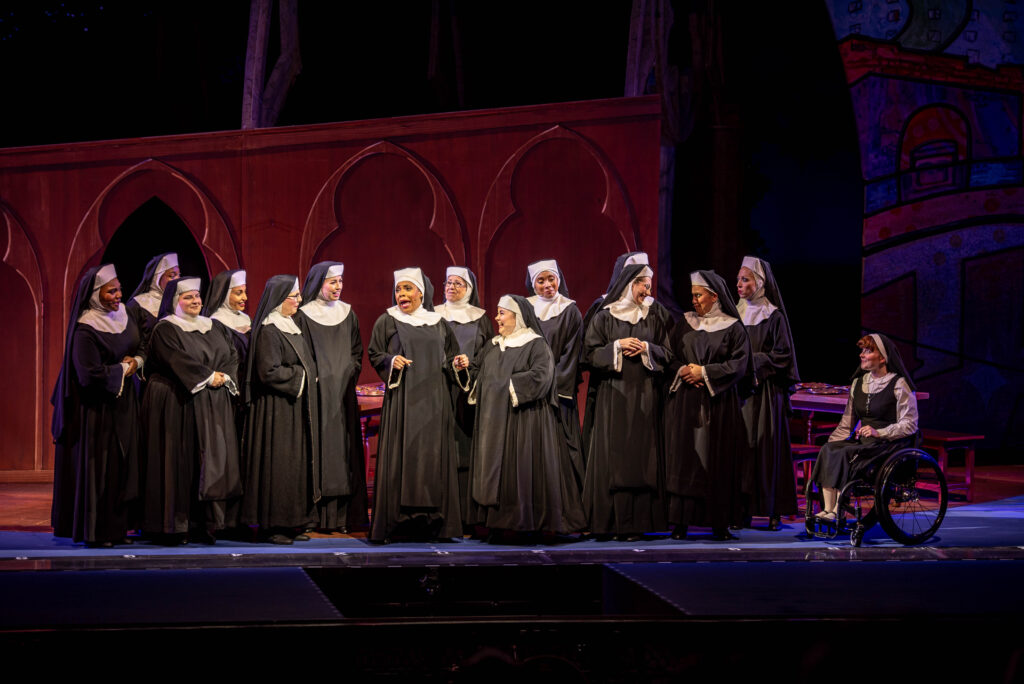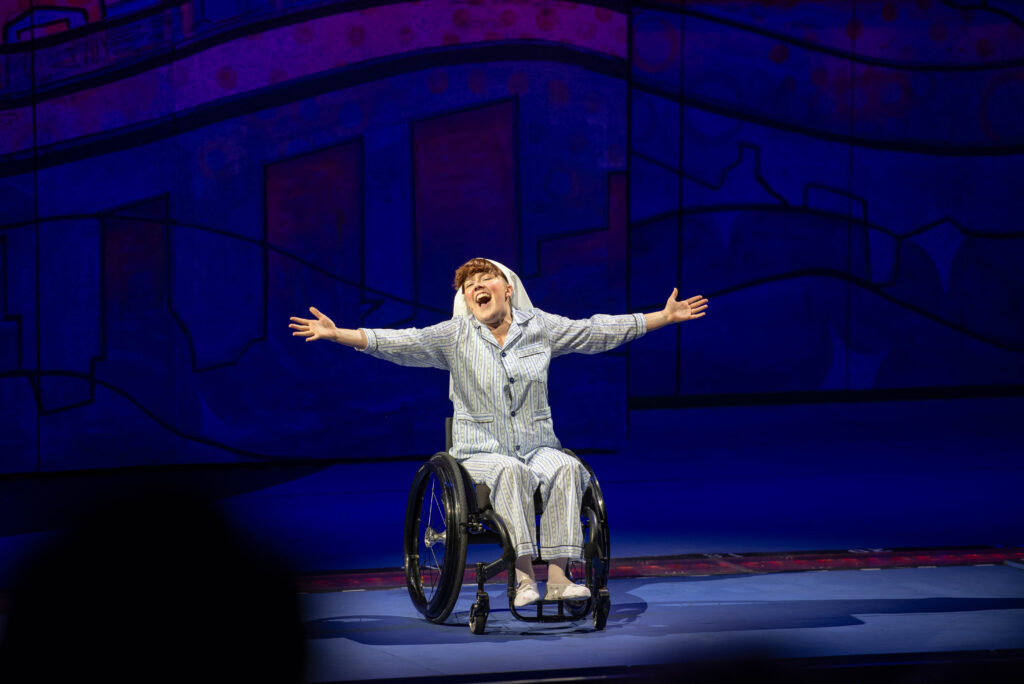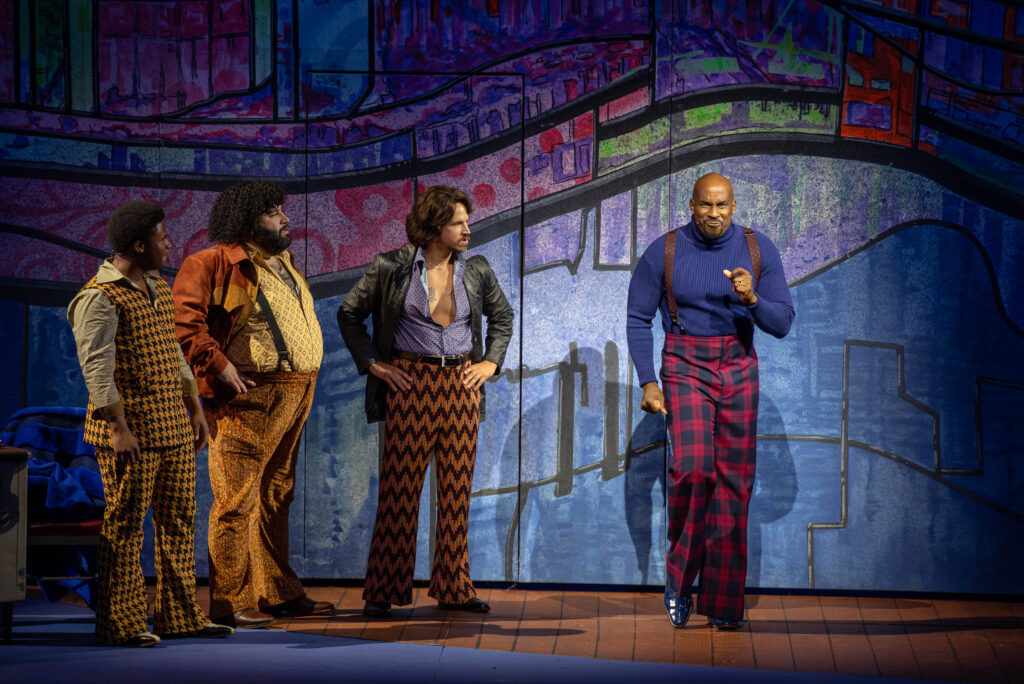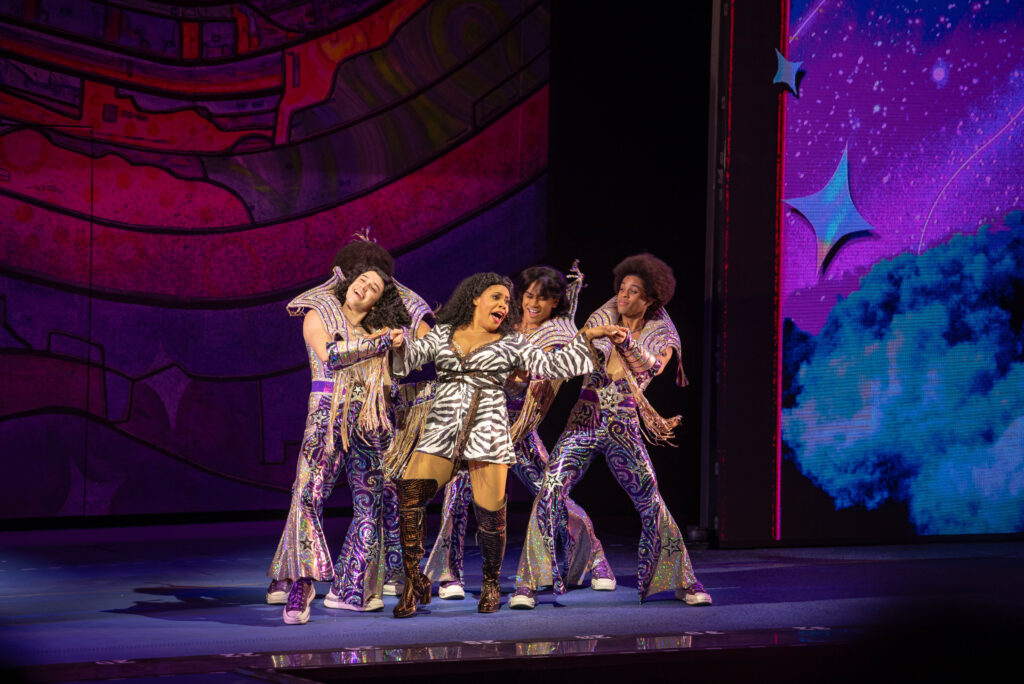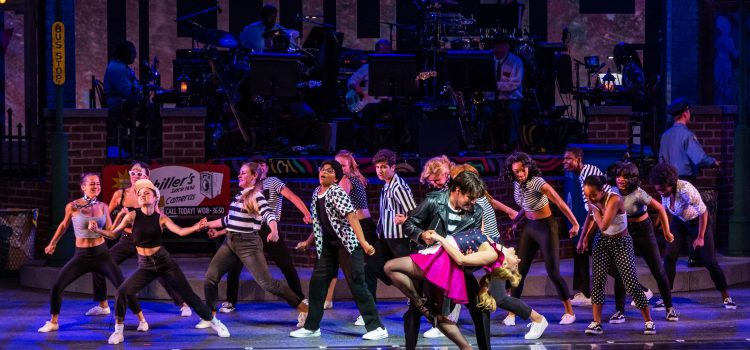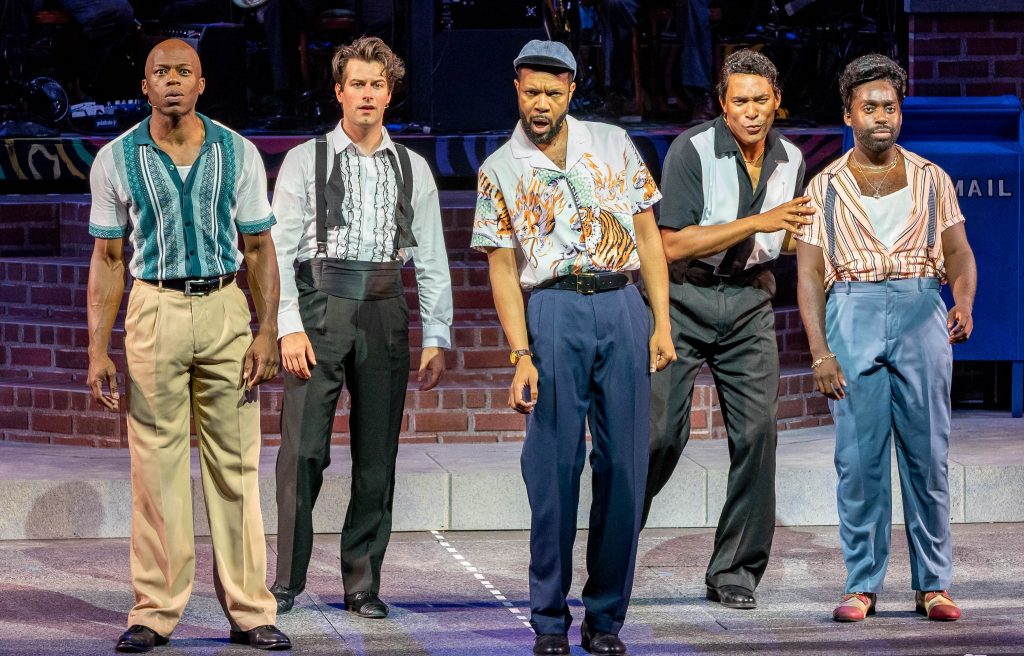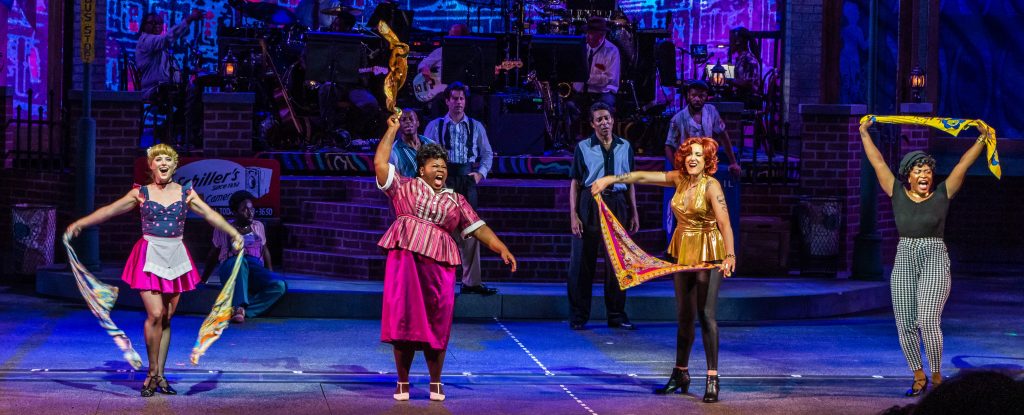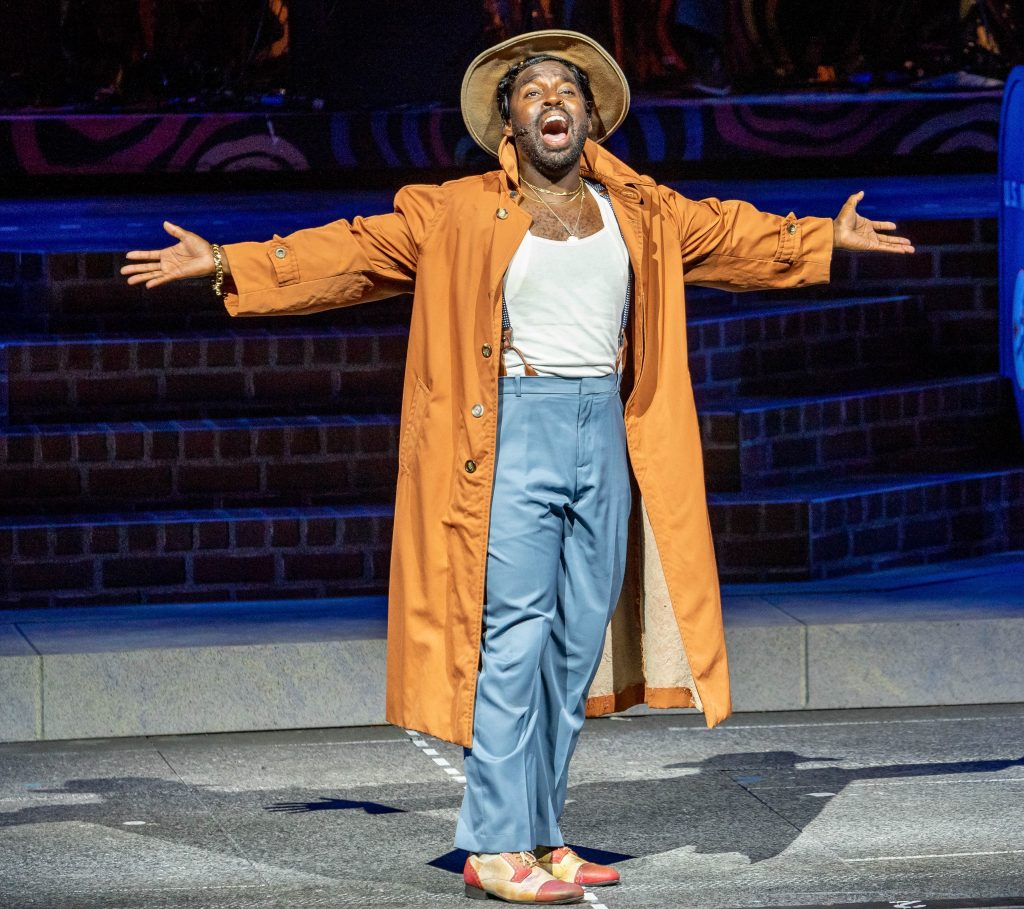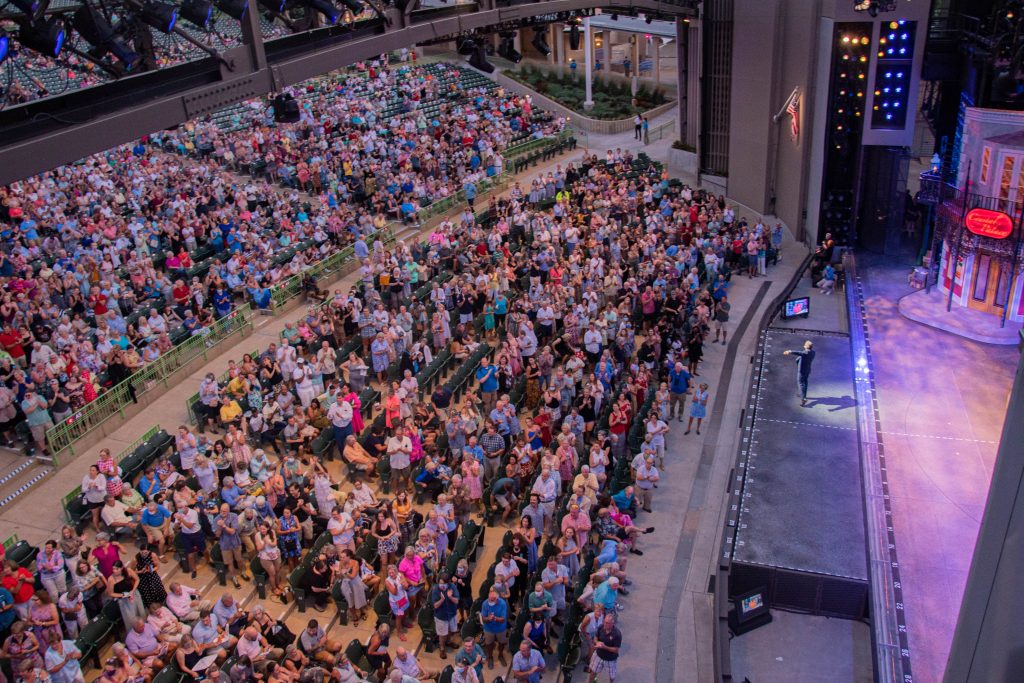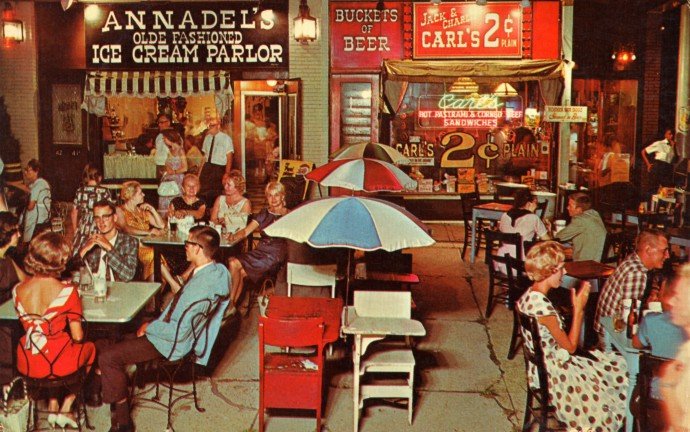By Lynn Venhaus
Deeply personal and profoundly moving, “Dear Evan Hansen” grabs our hearts and doesn’t let go.
Sensitively presented by director Rob Ruggiero and perceptively told by an emotionally engaged cast in its powerful Muny and Midwest regional debut, the musical is anchored by an astounding Michael Fabisch, who immediately wins us over as the awkward outcast Evan.
In his star-making turn, the captivating Fabisch, who played Evan on the most recent national tour, projects vulnerability and a remarkable range of feelings as an anxious high school senior struggling to fit in.
He is in nearly every scene — his physical stamina as impressive as the emotional depth he expresses in the signature songs “You Will Be Found,” “For Forever,” “Words Fail,” and “Waving Through a Window.”
Through a series of unfortunate events, Evan finds himself entangled in a web of lies after a troubled classmate’s suicide, which spirals out of control.
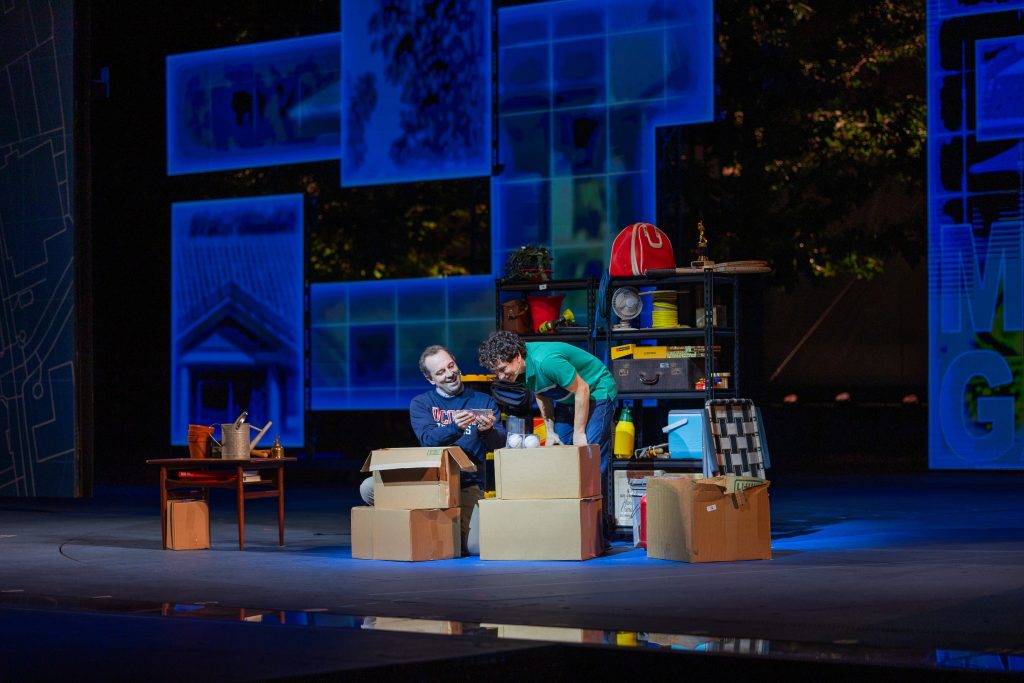
When you first hear that everything is based on a lie, you may have a ‘wait – what?’ reaction. However, Evan’s hard-fought journey of self-discovery resonates. He makes mistakes, and there are consequences, but ultimately, there is hope.
The story asks us not to judge Evan but understand why he created this charade — to comfort a grieving family. Forgiveness is a powerful tool here too.
The spotlight on the anonymous and anti-social Connor Murphy has a beneficial outcome — The Connor Project, a viral movement for inclusion, that grew from the students’ efforts.
Statistics tell us loneliness is at an all-time high. A National 4-H Council survey found that seven out of 10 young people say they struggle with mental health issues. I think this musical can save lives, and if it helps someone reach out, what a wonderful result. It is certain to spark conversations.
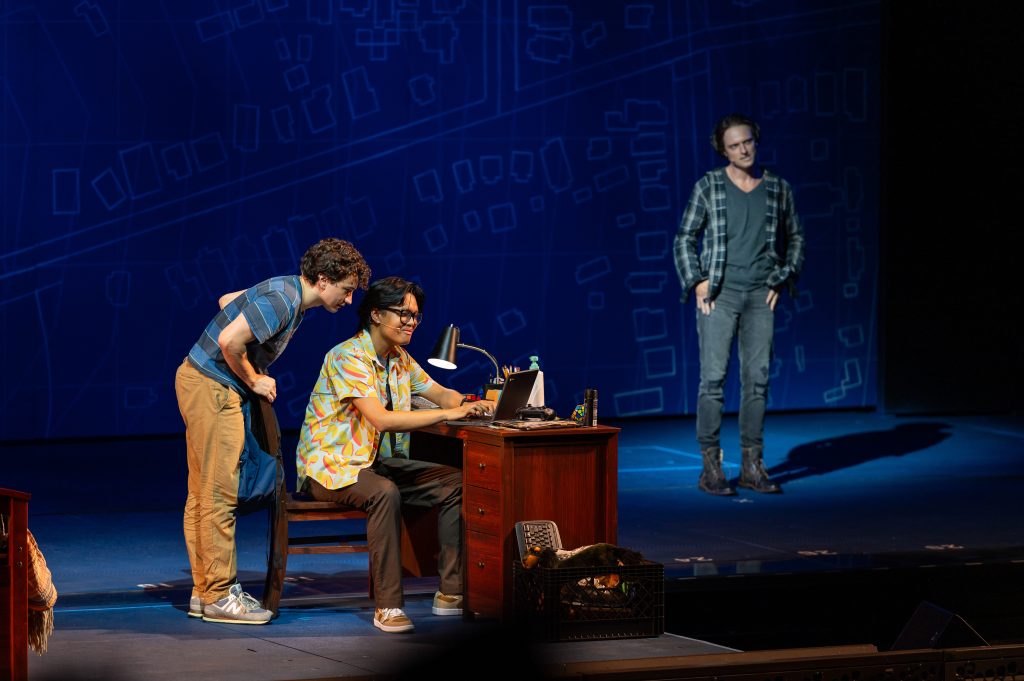
Even during an intense summer heat wave, a highly attentive audience leaned in, rapt. Sensing that the musical connected to each person in some way, no matter what age, I was struck by the hush of the engaged crowd – except for a few overheard sniffles here and there (understandable, and with me, unavoidable).
Try getting through “So Big/So Small,” a heart-melting vocal by Jackie Burns, who plays Evan’s caring single mother Heidi. Her husband left when Evan was 7 and has a whole new life in Colorado. She addresses her shortcomings in this tearjerker.
Burns, Broadway’s longest running Elphaba in “Wicked,” is raw and real in her portrayal of Evan’s hard-working, exhausted mom, juggling her job as a nurse’s aide, school classes to become a paralegal, and trying to provide for her son but not always being there for him.
“I knew there would be moments that I’d miss
And I knew there would be space I couldn’t fill
And I knew I’d come up short a million different ways
And I did
And I do
And I will”
Pass the tissues. Not only does this song foster empathy, but the entire show can be viewed as therapeutic/cathartic – and necessary. Oh, the dialogues to follow in homes across America.

The show is universally relatable because of its themes of mental health, grief, social anxiety, fear of being alone, yearning for acceptance, and understanding how others feel invisible or unvalidated for who they are.
While the high school setting conveys both despair and wanting to please in an overwhelming digital age, the adults are affected too, as they do ‘adulting’ in an ever-changing playing field where the goal posts keep moving.
Everybody seems to be trying to do the right thing and find their place in the world, flaws and all. That is why the cast’s ability to depict frustration, confusion and joy is felt, landing in every corner of the Forest Park seats. Who wouldn’t want an opportunity for reinvention?
An ensemble peppered with fresh faces and seasoned principal performers tugs hard at the heartstrings as their impassioned voices unite in splendid harmonies. The Act One closer, “You Will Be Found” is an anthem we always need, but more so in our contemporary cold, cruel world.
Standing out in supporting roles – and making their Muny debuts – are Joshua Bess as the anonymous and aggressive Connor, whose apathy may have masked a cry for help, Afra Sophia Tully as his sister Zoe, and Bryan Munar as tech whiz Jared, a family friend who reluctantly helps Evan become an internet sensation.

Savy Jackson, last year’s Ariel in “The Little Mermaid,” is charming as the cheerful over-achieving Alana. Rob McClure, in his ninth Muny show, and his real-life wife Maggie Lakis, also a Muny vet, portray Connor’s parents Larry and Cynthia, pain and sorrow etched on their faces.
Pairing with Fabisch, Bess is light-hearted in “Sincerely, Me,” Tully has a tender duet in “Only Us.” and McClure sentimental in “To Break in a Glove.”
A fusion of musical theatre and pop, the score by composer Benj Pasek and lyricist Justin Paul is well-integrated into the recognizable story by Steve Levenson.
Golden boys Pasek and Paul, the latest EGOT winners (20 and 21st), earned Tonys and a Grammy Award for “Dear Evan Hansen,” an Oscar for “City of Stars” from “LaLa Land,” and the primetime Emmy for the song “Which of the Pickwick Triplets Did It?”, from “Only Murders in the Building” in the episode “Sitzprobe.”
With its beautiful imagery of an idyllic day, indelible poetry about friendship, and haunting melody, “For Forever” hits hard. While it’s a total fabrication from Evan to soothe the Murphys in mourning, it emphasizes Evan’s aching desire for connection.
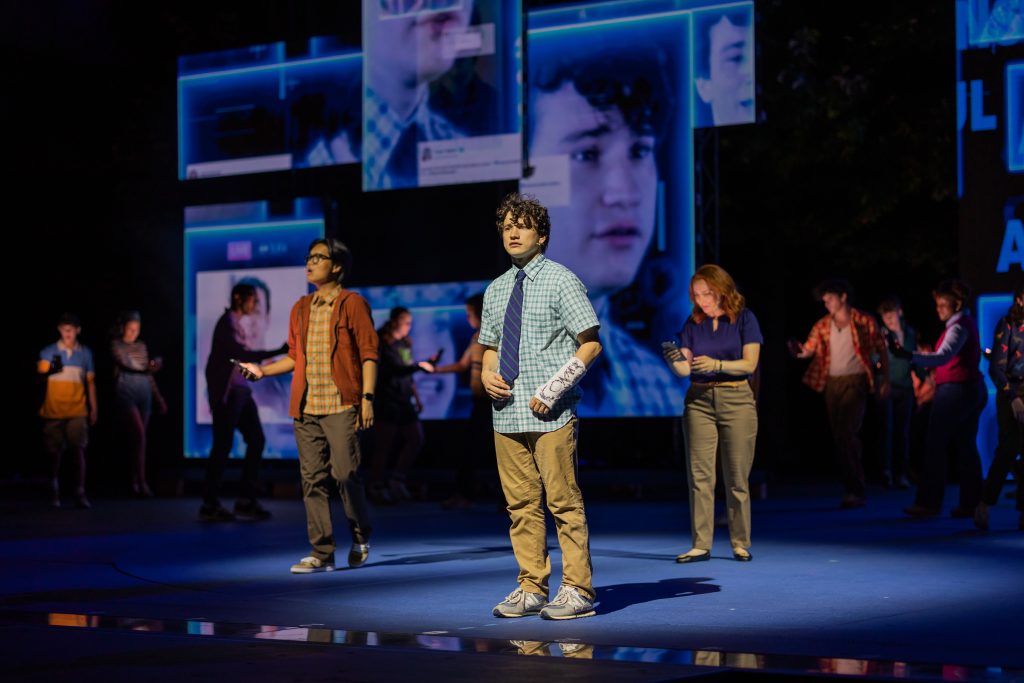
The Muny concept for this show works well – not overpowering with razzle-dazzle but letting the identifiable story with its unforgettable characters be the focus. Ruggiero, in directing his 11th show, has a knack for staging on the outdoor space, and his insight influences the production’s vibrant tempo.
A 17-member cast, with eight principal characters and including “virtual community voices” – Kaley Bender, Vera Brown, Alex Daspit, Spencer Davis Milford, Zoe Brooke Reed, Essence Anisa Tyler, Noah Van Esse, and Oscar Williams, is expanded to include a 24-person teen ensemble on stage and eight vocalists offstage.
The projection technology, its depiction of social media, and setting the scene locations, helps illustrate the isolation – and the intimacy. Michael Schweikardt’s sleek scenic design, paired with Kevan Loney’s video design, is a terrific visual landscape.
Eschewing the need to open up scenes, Ruggiero has pared them down instead – dining room, bedrooms, school computer lab – with human interaction, strikingly illuminated by lighting designer Rob Denton.
John Shivers and David Patridge’s sound design was effective in its integration of electronic communication as well as delivering crisp vocals in musical numbers.
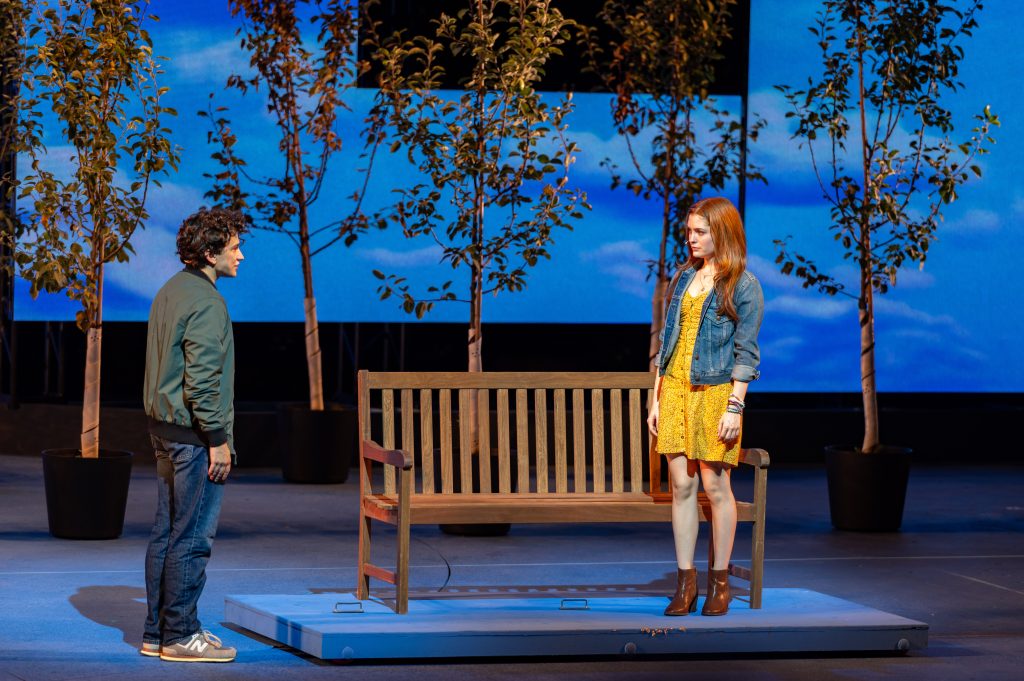
Music director Roberto Sinha strategically used sumptuous strings and mastered poignant orchestrations by Alex Lacamoire, while Justin Paul’s vocal arrangements added emotional heft. How can you not fall in love with that score?
Costume designer Joseph Shrope outfitted the characters in age-appropriate casual attire, and of course, Evan wore his trademark polo shirts.
The musical, which opened on Broadway in December 2016, won six of the nine Tony Awards it was nominated for in 2017, including Best Musical, Best Book of a Musical, Best Original Score, Best Actor in a Leading Role in a Musical (Ben Platt as Evan), Best Featured Actress in a Musical (Rachel Bay Jones as Heidi), and Best Orchestrations.
It ran on Broadway until Sept. 18, 2022, for nearly six years, including 1,672 regular performances and 21 previews.
Because of its enduring and extraordinary impact, the musical remains a timeless, moving experience. Emphasizing truth, the Muny’s adaptation is worthy of your time and attention – for it speaks from the heart straight to the heart. You are not alone.
The Muny presents “Dear Evan Hansen” July 28 – Aug. 3 on the Forest Park outdoor stage. For more information or tickets, visit www.muny.org.
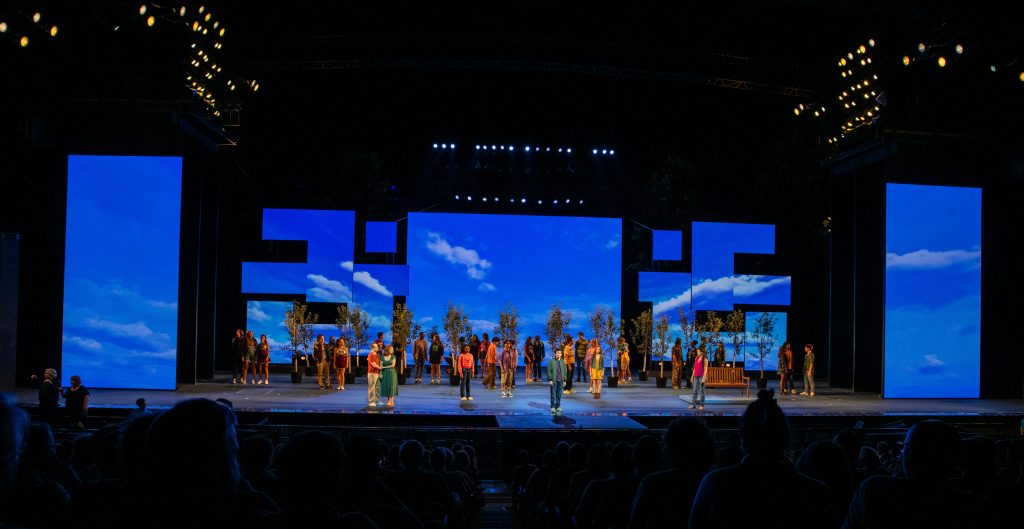

Lynn (Zipfel) Venhaus has had a continuous byline in St. Louis metro region publications since 1978. She writes features and news for Belleville News-Democrat and contributes to St. Louis magazine and other publications.
She is a Rotten Tomatoes-approved film critic, currently reviews films for Webster-Kirkwood Times and KTRS Radio, covers entertainment for PopLifeSTL.com and co-hosts podcast PopLifeSTL.com…Presents.
She is a member of Critics Choice Association, where she serves on the women’s and marketing committees; Alliance of Women Film Journalists; and on the board of the St. Louis Film Critics Association. She is a founding and board member of the St. Louis Theater Circle.
She is retired from teaching journalism/media as an adjunct college instructor.

